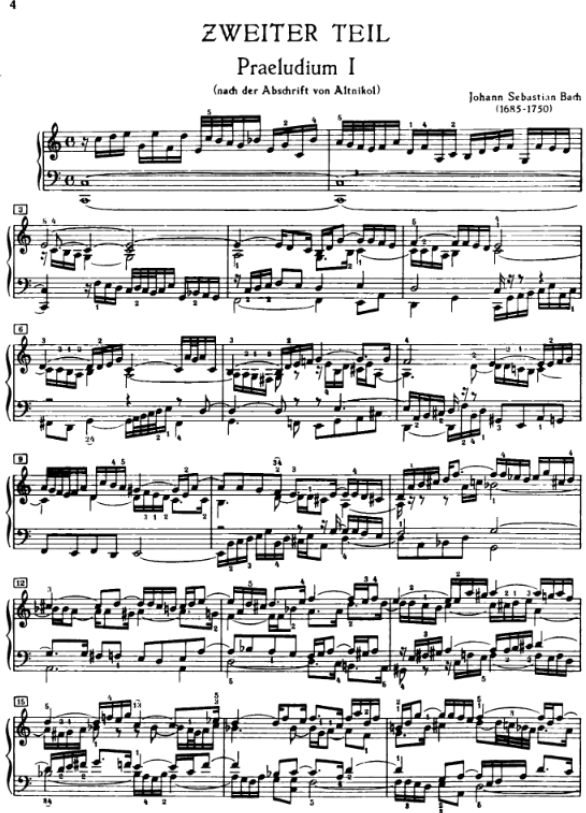Since the beginnings of jazz around the year 1900, jazz musicians have sought ways to bring classical techniques into their improvised performances. The stride versions of the classics in the 1920s-30s as well as the fugal writing of Charles Mingus and John Lewis beginning in the 1940s have produced some of the most compelling jazz ever recorded.
As pianists, we can even bring some of these techniques into our improvisations. One way to begin is by absorbing the technique in a classical context and then putting yourself in the same frame of mind as you play a jazz standard.
Let’s take a look at a 4-part contrapuntal texture in the music of Bach.
Here’s Bach’s Prelude in C Major from The Well-Tempered Clavier, Book 2:

Notice how the 4 parts (soprano, alto, tenor, and bass, if you like) don’t always mirror each other exactly. It’s more like a “free” counterpoint instead of in strict imitation. Each part meanders its own way, sometimes echoing its neighbor and sometimes taking on its own character.
The effect is stunning and very “alive.”
As you play through the piece over the course of a few weeks, begin to imagine yourself improvising the lines. You’re still playing it as written, but you’re pretending that you’re making it up as you go along. This will get your fingers in the habit of creating this kind of 4-part texture yourself so it will be a little easier to jump right in with a jazz standard in the same way.
Then, choose a jazz tune to play and “give it a go.” It might sound great the first time or it might take a while. That doesn’t matter as much as the fact that you’re enjoying the process and that you’re beginning to hear and feel what it’s like to create a 4-part texture on a jazz tune. Keep going and it will get easier over time.
I’ve been playing a lot of Bach lately and it was interesting how his music influenced my latest Journey Through The Real Book video, on Charlie Parker’s “Blues For Alice.” I didn’t try to play like Bach per se. Rather, I went into a 4-part texture at times that uses Bach’s techniques, while keeping a bebop sound throughout.
You can watch and listen to it here:
I hope this inspires you to play some Bach and improvise some counterpoint on “Blues For Alice” or any other jazz tunes you enjoy playing.
Good luck and have fun!
Learn the 5 Essential Left Hand Techniques with my free ebook: Left Hand Techniques for Jazz Piano
You’ll also get my weekly jazz newsletter with practice tips and inspiration
